Canton Rio Camanibal, revisited
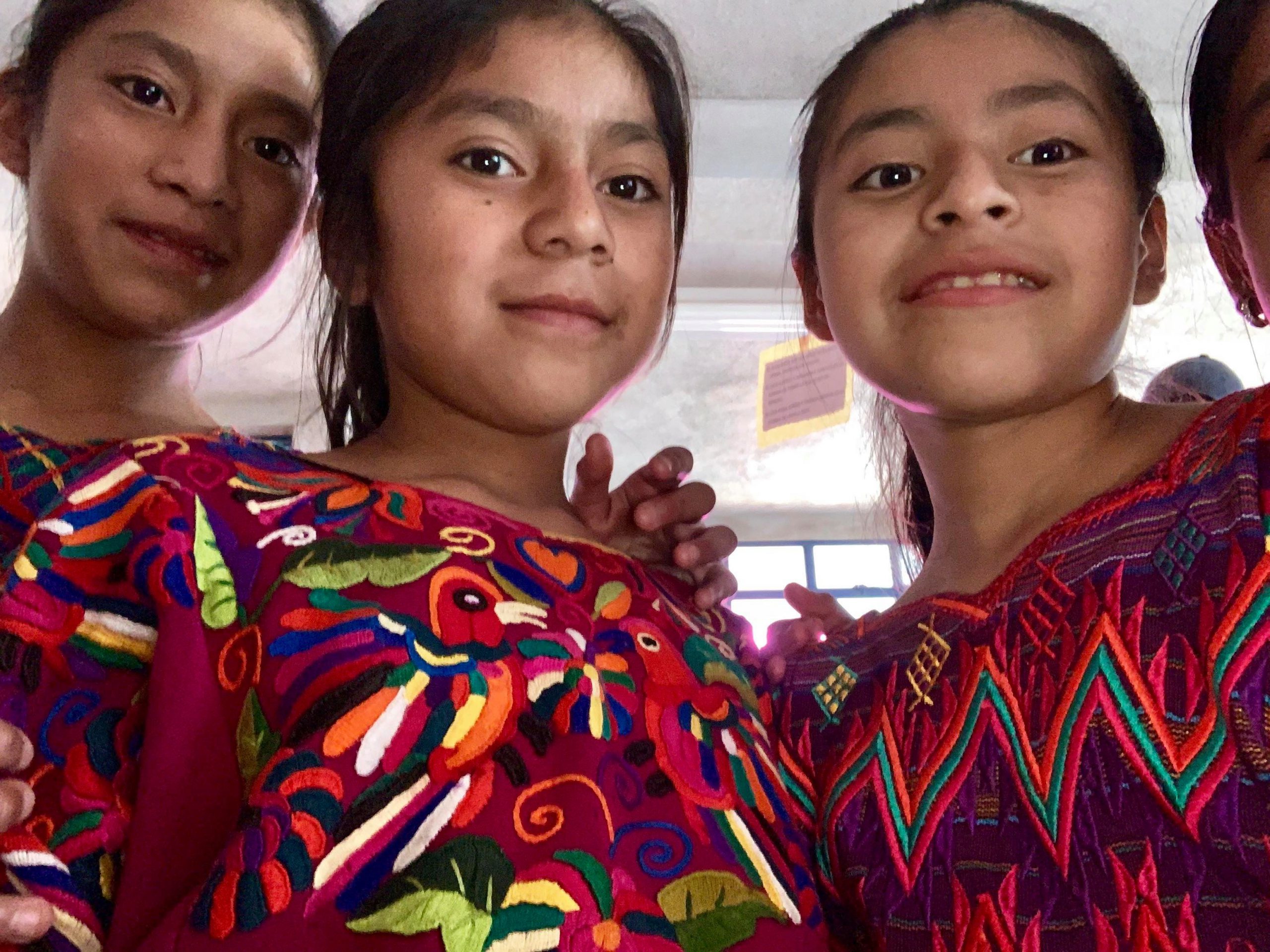
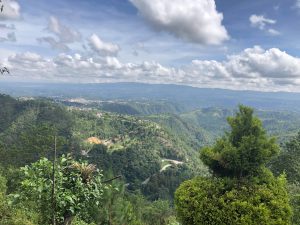
The first project for our nonprofit (in 2017) was the installation of a library and tablet computer lab for a public elementary school in Canton Rio Camanibal, a municipality belonging to the city of Chichicastenango. Canton Rio Camanibal is impossible to find on the map, so we were met at the Mirador of Chichicastenango (lookout) and then were led the rest of the way.
Some of the fundraising for this year has fulfilled a few smaller requests from the school. First, we provided seven large metal file cabinets to store student papers and teacher materials, one for each of seven classrooms. Each classroom also received a new very large dry erase board. We also took with us a Netgear signal booster that would increase the range of the technology we previously provided. They found that when they tried to take tablets out of the library (where the access point was) that they couldn’t maintain a connection to the RACHEL server.
In addition to those things already mentioned, we provided the school with funds to buy materials to erect side panels to their patio roof which keeps rain from blowing in on the sides. This was requested in the middle of the year, after they suffered a period of a lot of rain and reported that for several weeks the kids could not have recess or physical education, because those are both outdoors and the outdoor area was too wet.
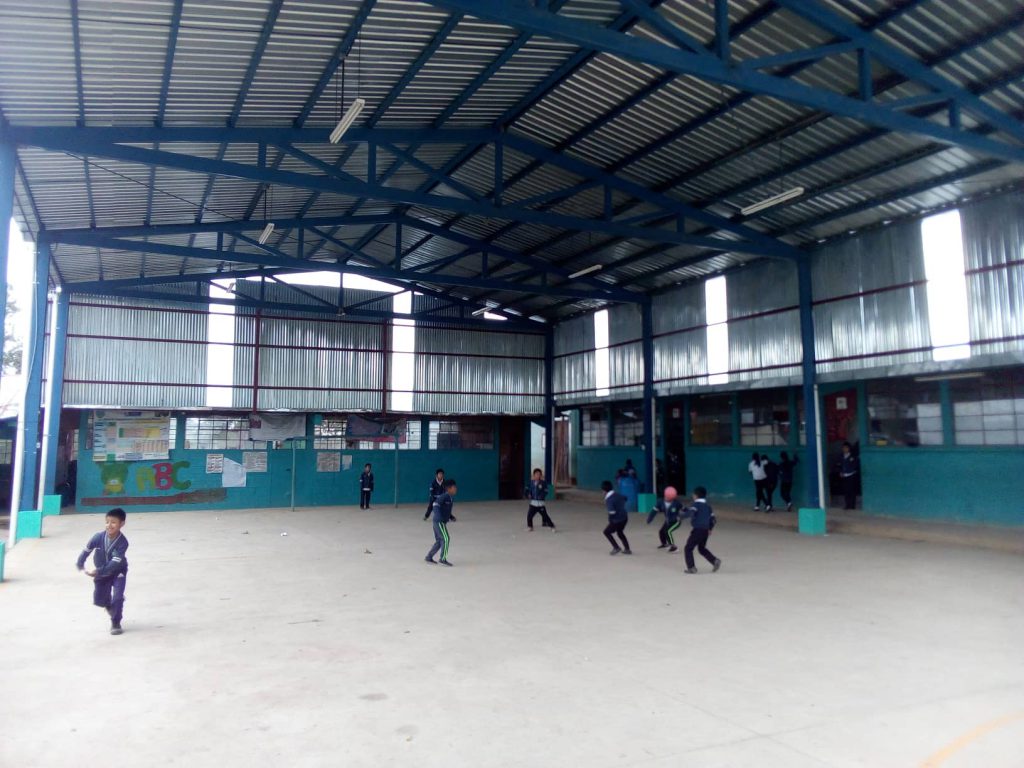
When we pulled up the road pointing to the school, children started running after our bus. When we stepped out, voices over a microphone were welcoming us back to Rio Camanibal, fireworks were set off, and the band started to play.
Children ran to greet us, teachers hugged us, and we took in the beautifully decorated sights of the school patio. Pink satin banners with pink and white balloons were suspended from the rafters of the awning overhead. A pine needle carpet made a path from our bus to the “stage” and flower arrangements were placed all around the perimeter of chairs under the covered patio. There was a huge welcome banner as a backdrop to the stage and beautiful textiles lined the tables where we sat in front.
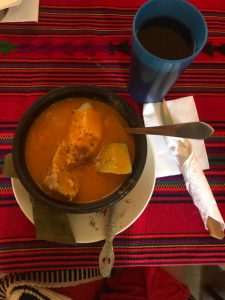
Manuel and the rest of the staff at the Rio Camanibal school showed the same hospitality and care that they did two years ago when we last visited. So much work and time went into the planning of this ceremony. I was presented with a schedule of events for the day. Again, the school utilized the services of Diego Xirum to translate for our group and also into K’iche’ (the local Mayan language) for the elders and parents that had come for the celebration. They served a snack of delicious banana bread and sweet peaches, the latter being a crop grown in their community. And for lunch, they served beef pulique, tamalitos and rosa de jamaica to drink. Yum!
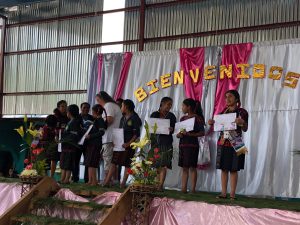
I was so impressed to hear the welcoming message from the president of the Gobierno Escolar (“student council”) as she welcomed us in Spanish, K’iche’ and English! Near the beginning of the program, I was given the honor of awarding the prizes for the reading contest that we sponsored at the beginning of their school year. The prizes were selected and purchased by the teachers with funds that we provided. I was especially touched that the winners at the upper grades received Spanish/English dictionaries as part of their prize and I was told that when I visited next, I would hear more English! While I was impressed to hear that, I also hope that they never abandon their Mayan language of K’iche’ in favor of Spanish, English, or anything else. Language is such a huge part of culture, and the K’iche’ Maya culture is strong… alive and well.
The series of dances and musical performances by children and adults alike is additional proof that the culture of the Maya people is strong. The children at the school performed dances depicting ceremonial rites where they bowed in each of the cardinal points: north, south, east and west. They danced with baskets and flowers, exchanging fruits as if they were at market. They unfurled and interlaced silk banners and moved in a circular fashion as if they were dancing around a May pole.
The adults were heavily involved as well, passing the culture down to future generations. There was a man performing a dance with fireworks and a statue of a man on a horse. The fireworks were lit inside a round basket lattice-work ball and it was lifted above his head as he danced around. It was explained to me that this dance was performed in honor of the town’s patron saint, Santo Tomás (St. Thomas the Apostle) with the dancer moving in rhythm until the fireworks stopped burning.
Also, there was a group of musicians that performed a series of traditional songs using only instruments made primarily of wood. There were two small marimbas, a flute, a gigantic rain stick (that was taller than the person playing it) and a series of drums made from turtle shells. The group’s name was Saq B’e, and their sound was so beautiful. I have always loved the sound of the marimba, but when you combine it with the softness of the flute and the heart of percussion: wow!
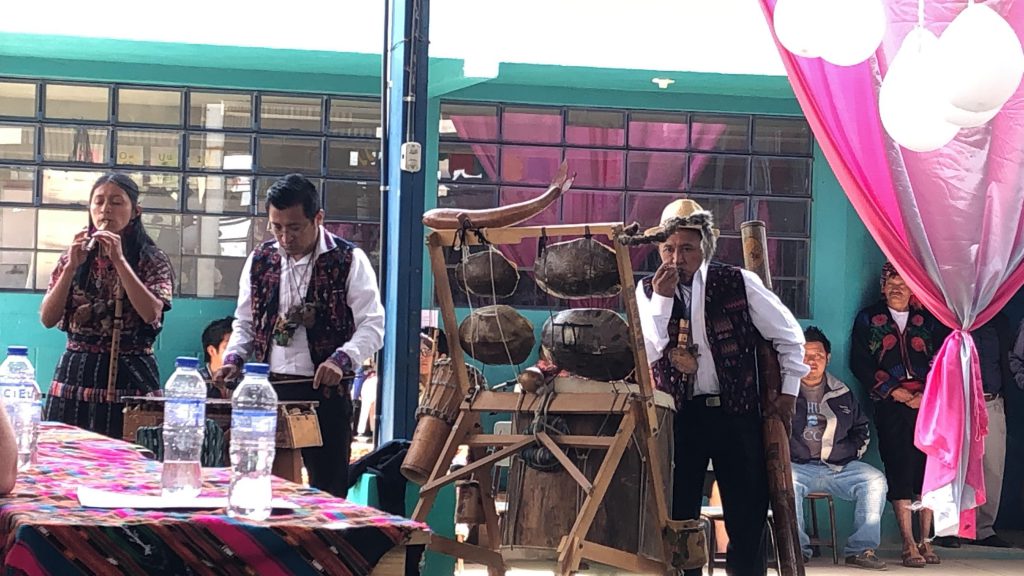
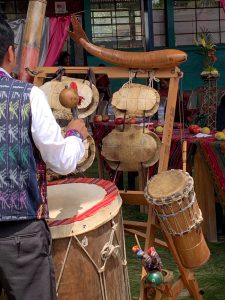
The ceremony today was meant in part to show us gratitude for our support of their school, but was also a celebration for the community and a way to record the details in a ledger. Communities in Guatemala are very structured. Processes are followed precisely and data is recorded in notebooks very neatly, leaving out no details. I think a person could review the accounting notebook for the school 100 years from now and feel like they were present at the event today!
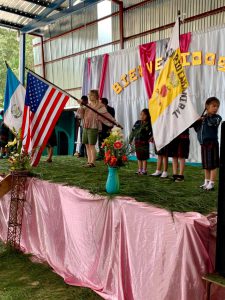
In addition to their formal accounting, most Guatemalans are thorough in their greetings and their rituals. Like our visit two years ago, there was a civic part to the program in the day’s activities. There was the reciting of the Guatemalan pledge of allegiance for the students and other audience members in attendance as well as a flag ceremony and playing of both the Guatemalan and United States national anthems. Katie, from our group, volunteered to carry and hold the US flag for this part of the ceremony. One interesting thing to note is that they played three verses of the “Star Spangled Banner”. I had never heard more than the first one!
In addition to our group, the staff at the school in Canton Rio Camanibal invited the “superintendent” of all Chichicastenango schools to take part in the day’s festivities. As is customary, he gave a lovely speech and then offered thanks (extreme amounts of gratitude, in fact) for the support. Incidentally, everywhere we go in Guatemala and every school/community/organization to which we give support, we hear the same sentiments: the government offers no support and it is up to the communities to self-fund. Without the ability to do so, the needs are left unsupported. That is why they are so grateful to us and other organizations like ours. So, that is why we like to repeat often: Thank you for the donations which help us help them!
I feel so strongly about the importance of maintaining the language of the place where you were born that I remembered to bring with me not only some additional books for their library but also a copy of the quadrilingual Guatemalan Picture Dictionary and Peter Perdido Finds his Way. For those unfamiliar with the stories, I wanted to let you know that we self-published two books, both of them printed in four languages, K’iche’, Kaqchikel, Spanish and English. The story Peter Perdido Finds his Way is based on our inaugural service project as an official nonprofit and so therefore the school in Rio Camanibal happens to be in it!
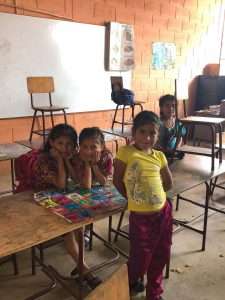
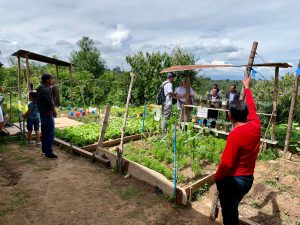
Part of the day’s event included a tour of the classrooms and schoolyard. In each one, we were showed the placement of the new dry erase boards on the wall — and on some of them I even had messages left for me! The filing cabinets were also present in each room, dutifully noted, and receipts provided. After we toured the classrooms, we went behind the school building and saw the pedagogical garden that they planted and all of the vegetables growing. What a wonderful idea to create a garden of learning — a place to learn about sustainable agriculture, planting styles, watering, harvesting, nutrition, and more!
Toward the end of our visit, John and I assisted with the installation and setup of the Netgear device to extend the range of their WiFi. While we were occupied doing that, the kids from the school either braided hair or interacted with play activities like soccer and basketball. Check out some of these cute photos! (I had a camera mishap where I accidentally deleted all photos from this day, so my immense and extreme gratitude go out to Mary Uebelacker and Becky Stone from my group, Diego, and the teachers in Rio Camanibal for sharing the photos they took of the day’s events!)
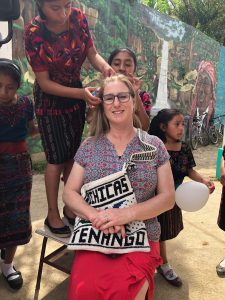
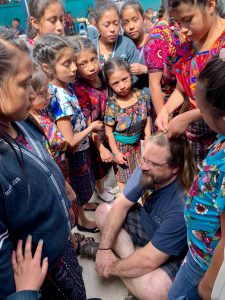
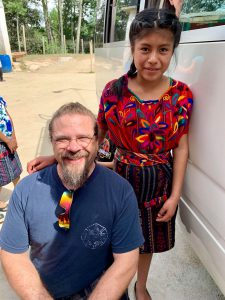
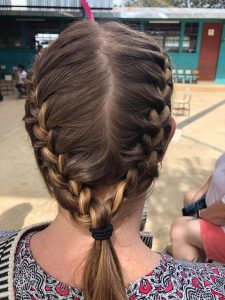
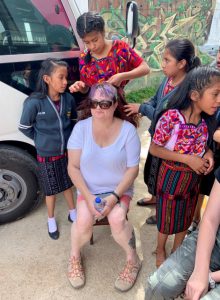
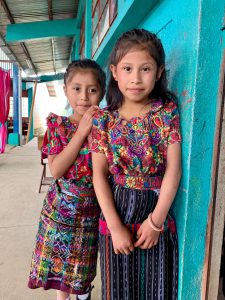
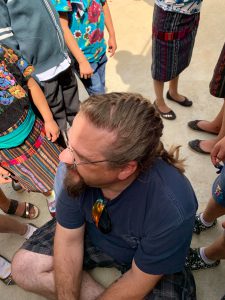
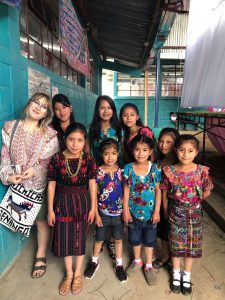
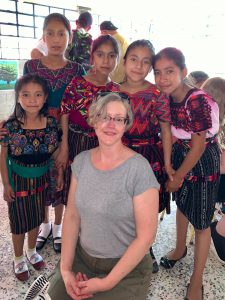
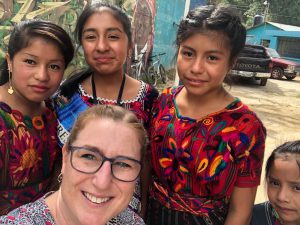
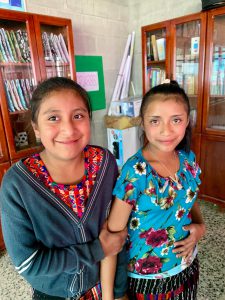
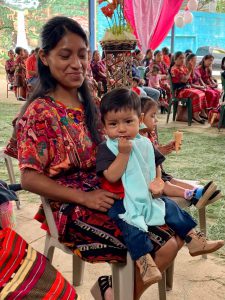
When all was said and done, we boarded the bus for departure. Children ran after the bus and called out many a hearty “adios”. I was sad to leave, but felt very fulfilled. As we exited Canton Rio Camanibal, we headed for a brief visit to Chichicastenango where the group (minus me, Jennifer) visited the church on a non-market day and I met separately with half of the committee on the Chujupen Potable Water Project and a student I sponsor in Chichicastenango.
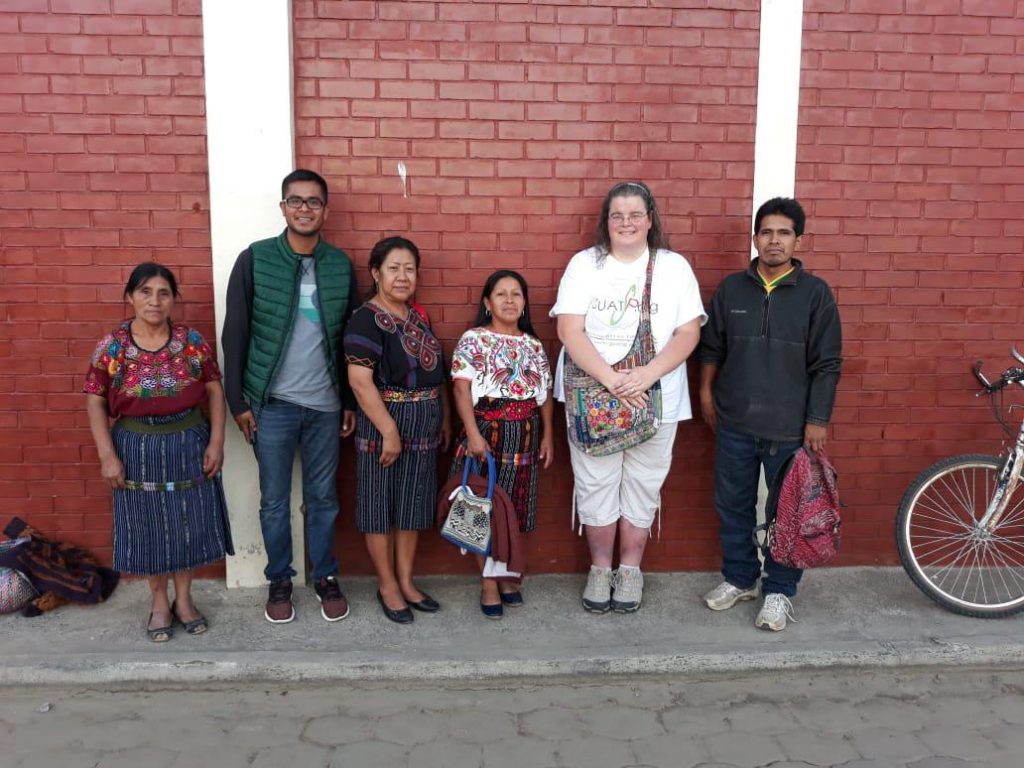
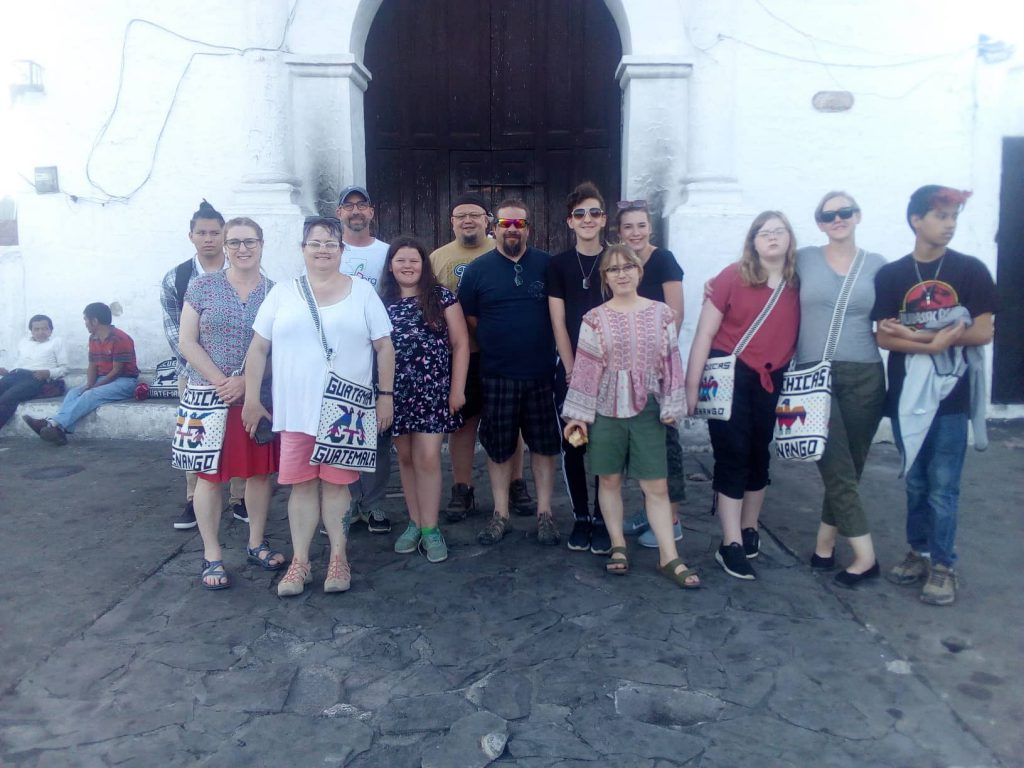
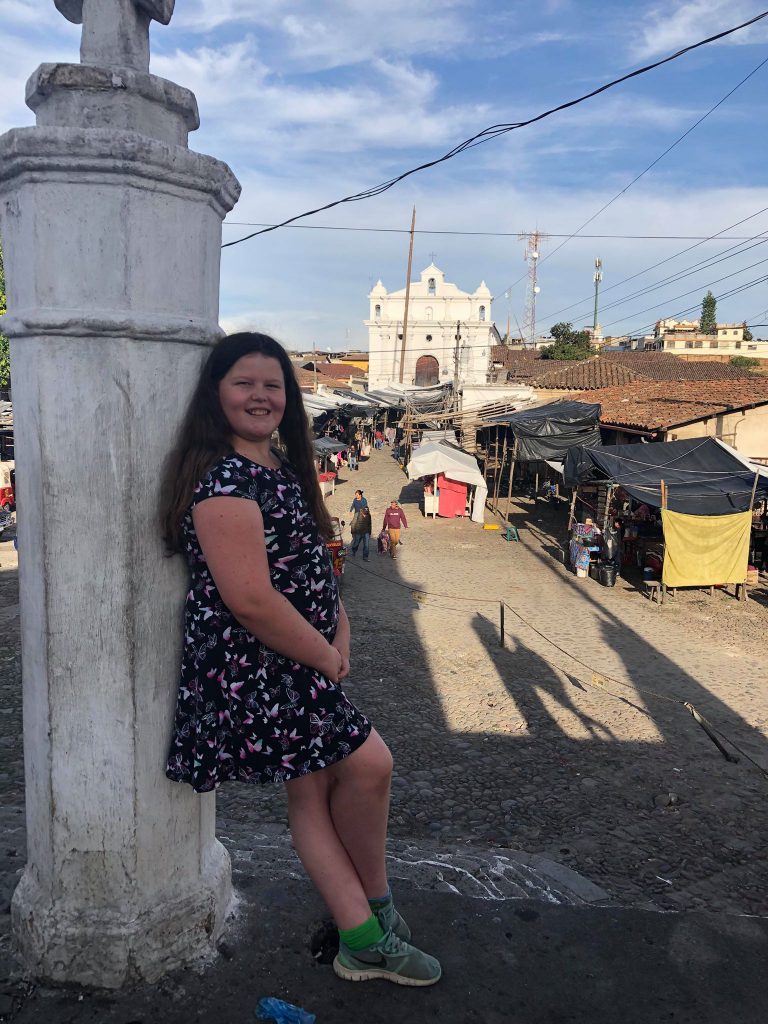
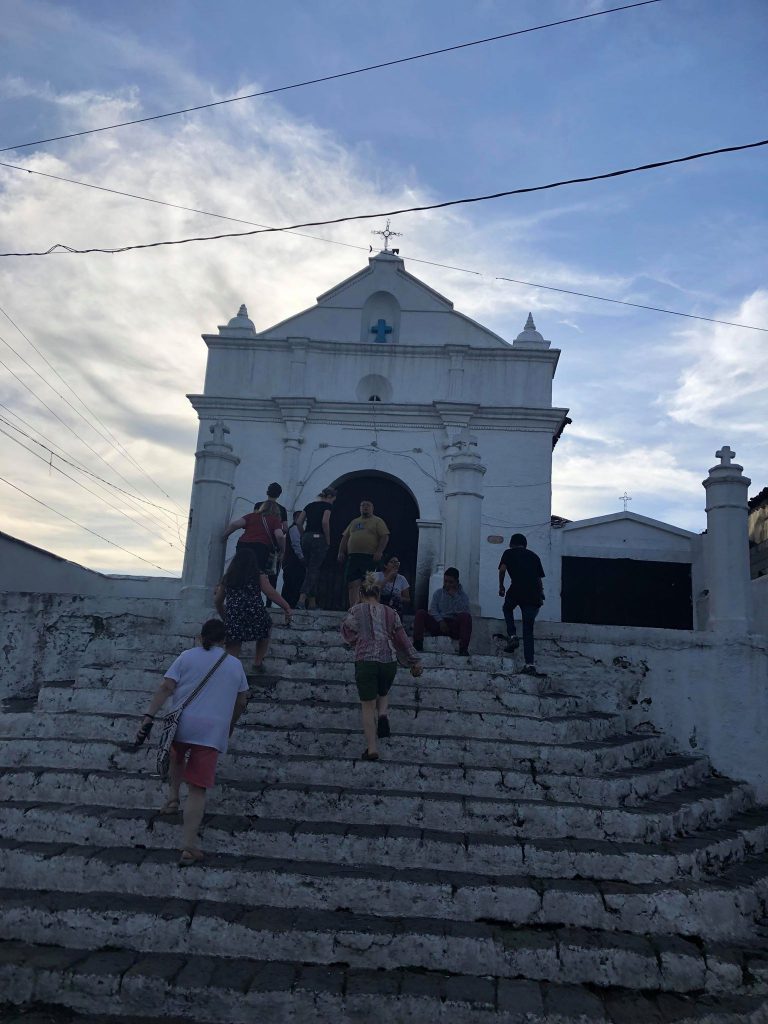

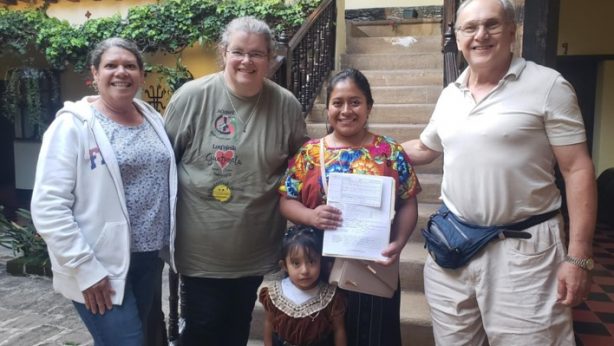
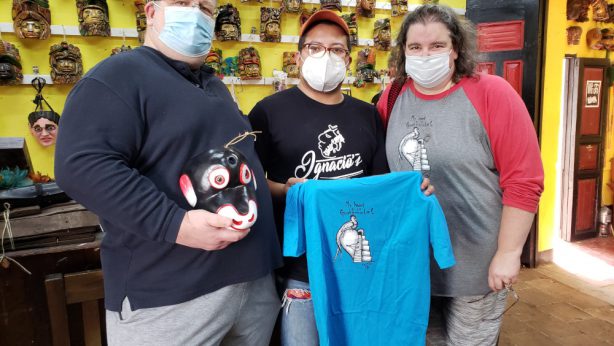
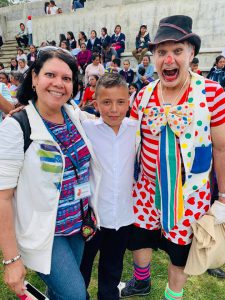 The “right” opportunity arose when I learned about a travel opportunity for adoptive families which would include volunteer work and cultural sightseeing. Being members of that team had a profound impact on me, Lillian and Andrew. Not only were we able to make a real connection to our son’s birthplace, but we met incredibly warm and generous people, all of whom we now consider to be a part of our “family.” In addition to the volunteer work I shared with the Team, I also was able to “give back” by performing as my alter ego, “Farfel the Clown” at a barbecue for children of The Backyard School. It will remain one the proudest and happiest memories of my life.
The “right” opportunity arose when I learned about a travel opportunity for adoptive families which would include volunteer work and cultural sightseeing. Being members of that team had a profound impact on me, Lillian and Andrew. Not only were we able to make a real connection to our son’s birthplace, but we met incredibly warm and generous people, all of whom we now consider to be a part of our “family.” In addition to the volunteer work I shared with the Team, I also was able to “give back” by performing as my alter ego, “Farfel the Clown” at a barbecue for children of The Backyard School. It will remain one the proudest and happiest memories of my life.
You have a beautiful way with words, and summarizing your activities. Having been on similar trips to Guatemala, I felt part of this group. Thank you, Jennifer, and all who are able to take these trips, and for those who cannot, but offer other means of support.
Thank you Ginny! I enjoy writing, and I maintain this blog for several reasons, some of which are…
1) It documents my experiences for my own memories and helps remind me of all of the joy that comes from the blood, sweat and tears that I put into the projects.
2) It lends to the transparency of what Guatemala Service Projects does as an organization and shows how the dollars donated to us are being used to help children and families in Guatemala.
3) It encourages those that read the blog to travel with us some day or refer our organization to other potential travelers and/or donors.
Wonderful! Thank you for sharing. I am always amazed at how much you, your family, and Guatemala Service Projects accomplishes!
Thank you Karen! We work hard all throughout the year so that our time in Guatemala is as productive and impactful as possible.